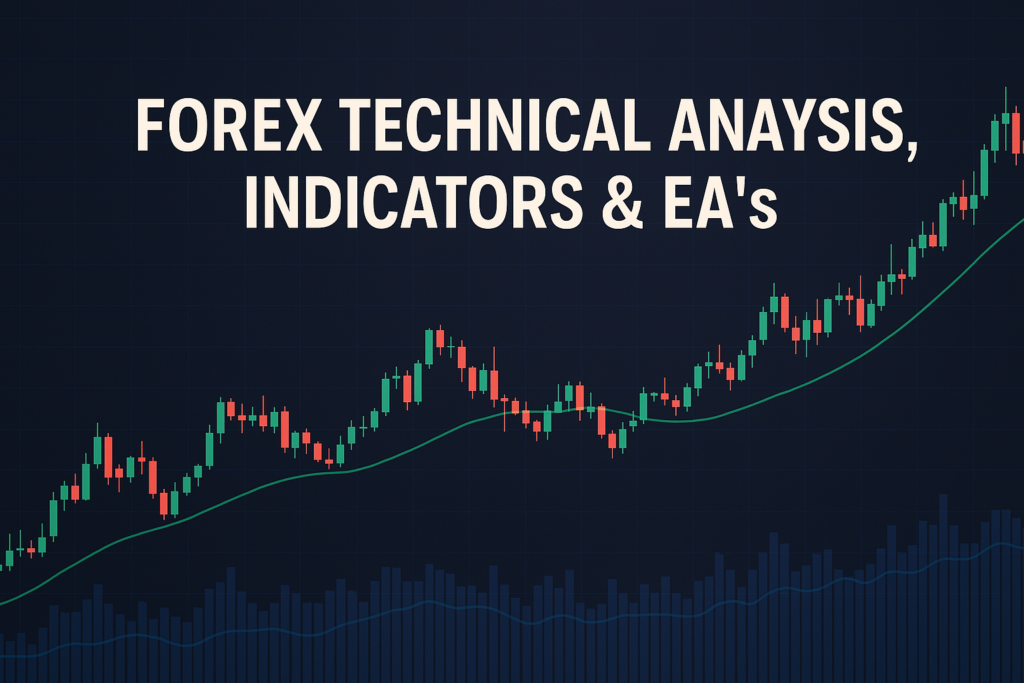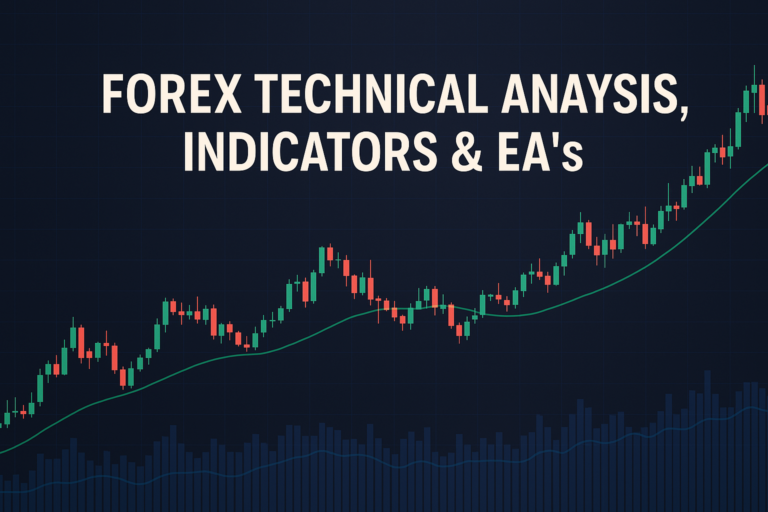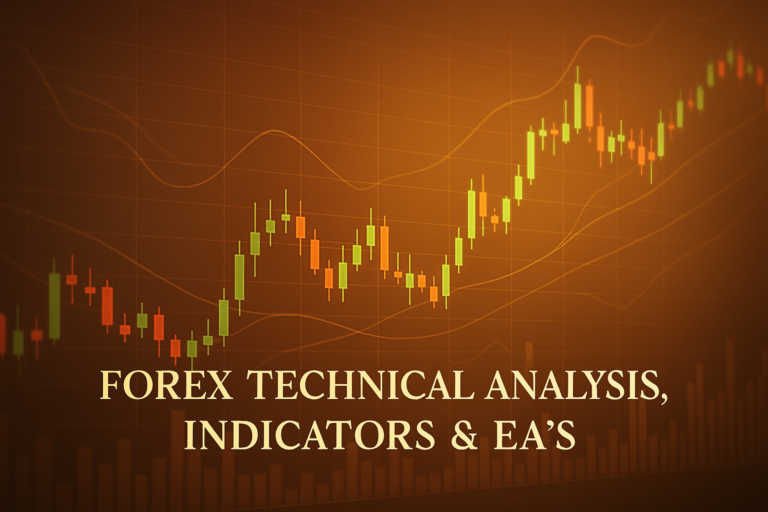
The exp moving average is an essential tool for Forex traders, enabling trend analysis and informed decision-making.
The exp moving average, or exponential moving average, is a crucial tool in Forex trading. It helps traders analyze price trends over time, making it easier to spot potential market opportunities. This average gives more weight to recent prices, thus reacting quicker to price changes compared to a simple moving average. For traders, understanding the exp moving average can be the difference between profit and loss.
However, both beginners and professional traders often struggle with the exp moving average. They may find it challenging to determine the right settings or misinterpret the signals it provides. This can lead to missed opportunities or costly mistakes. Understanding the exp moving average is important because it helps traders make informed decisions, ultimately benefiting their trading strategies.
This article will explore the exp moving average in detail, including its definition, history, advantages and disadvantages, and practical applications in Forex trading.
If you’re curious about where to trade XAUUSD, you’ll find valuable insights and tips to help you navigate the gold market.
What is a Exp Moving Average?
The exp moving average, or EMA, is a type of average that reacts more quickly to recent price changes than other moving averages. Imagine you’re baking a cake. If you only look at the last few ingredients added, you get a better idea of how the cake is coming together right now. That’s what the EMA does for price data in Forex trading.
Types of Exp Moving Average
There are various types of moving averages, including:
- Simple Moving Average (SMA): This average takes the closing prices over a specific period and divides by that number. It’s straightforward but can lag behind price movements.
- Exponential Moving Average (EMA): As mentioned, this gives more weight to recent prices, making it more responsive.
- Weighted Moving Average (WMA): This average assigns different weights to prices, focusing more on recent data but in a different way than the EMA.
How Does Exp Moving Average Smooth Out Price Action?
The EMA helps to filter out the noise in price data. In Forex trading, prices can fluctuate wildly due to various factors. The EMA smooths these fluctuations, allowing traders to see the underlying trend more clearly. For example, if you’re watching the price of EUR/USD, the EMA can help you identify whether the price is generally moving up or down over time.
Common Periods Used and Why
Traders often use common periods like 10, 20, 50, and 200 days for the EMA. Shorter periods, like 10 or 20, are great for quick trades, while longer periods help identify long-term trends. For instance, a trader may use a 50-day EMA to spot a longer-term trend, whereas a 10-day EMA might help them find short-term entry points.
The History of Exp Moving Average: How It Became Popular
Origin of Exp Moving Average
The EMA was created by financial analysts to provide a more responsive way to gauge price trends. It became popular because it offered traders a significant advantage in understanding market movements. Knowing that the latest prices hold more weight allowed traders to make better decisions.
When Did Traders Start Using It Widely?
Real-Life Stories
Many professional traders credit their success to the EMA. One famous trader, for instance, used the EMA to identify a trending stock in its early stages. By entering the market early, he made substantial profits as the stock price soared. Stories like these inspire many traders to learn and apply the EMA in their strategies.
Advantages and Disadvantages of Exp Moving Average
Advantages:
- Helps Identify Trends Easily: The EMA makes it easier to see when a trend is forming, allowing traders to capitalize on it.
- Useful for Dynamic Support and Resistance: Traders often use EMAs as dynamic support and resistance levels, which can guide their entry and exit points.
- Works Well for Crossover Strategies: The EMA is often used in crossover strategies, where traders look for points where different EMAs intersect.
Disadvantages:
- Lags Behind Price Movements: While the EMA reacts quickly, it still lags behind actual price movements, which can lead to missed opportunities.
- Can Give False Signals in Sideways Markets: In a choppy or sideways market, the EMA may produce false signals, leading to confusion for traders.
How to Apply Exp Moving Average on MT4 & MT5
Step-by-Step Guide to Adding Exp Moving Average on Charts
To add the EMA to your charts in MT4 or MT5, follow these steps:
- Open your trading platform.
- Select the chart you want to analyze.
- Click on “Insert,” then “Indicators,” and choose “Trend” followed by “Moving Average.”
- Set the “MA Method” to “Exponential” and choose the period you want.
- Click “OK” to add it to your chart.
Customizing Exp Moving Average Settings
You can customize the EMA settings by adjusting the period, colors, and types according to your preference. For example, if you like a blue EMA line of 20 periods, you can easily set that up in the indicator settings.
Saving Templates for Easy Application
To save time, you can create a template with your preferred EMA settings. Once you have your chart set up, go to “Template” and select “Save Template.” This way, you can quickly apply your custom settings to new charts in the future.
5 to 7 Trading Strategies Using Only Exp Moving Average
All Time Frame Strategy (M5 to D1)
This strategy works across all time frames. Traders look for an EMA crossover to determine buy/sell conditions. For example, if a short-term EMA crosses above a long-term EMA, it could be a buy signal.
Trending Strategies
In a trending market, traders use the EMA to identify the direction of the trend. For instance, if the price is above the EMA, it may indicate a bullish trend, suggesting a buy.
Counter Trade Strategies
In this strategy, traders look for price reversals. If the price crosses below the EMA in a bullish trend, it could signal a potential sell opportunity.
Swing Trades Strategies
Swing traders often use the EMA to identify entry points. If a trader sees a bounce off an EMA in a trending market, it might be a good time to enter a trade.
5 to 7 Trading Strategies Combining Exp Moving Average with Other Indicators
All Time Frame Strategy (M5 to D1)
This strategy combines the EMA with the RSI (Relative Strength Index). When the EMA aligns with an RSI signal, it increases the chances of a successful trade. For example, if the EMA indicates a buy and the RSI shows oversold conditions, it’s a stronger buy signal.
Trending Strategies
In trending markets, traders can combine the EMA with MACD (Moving Average Convergence Divergence). If the EMA direction aligns with the MACD trend, it reinforces the buy/sell signal.
Counter Trade Strategies
Using the EMA with Bollinger Bands can help identify counter-trade opportunities. If the price touches the upper Bollinger Band while above the EMA, it may signal a sell opportunity.
Swing Trades Strategies
Combining the EMA with Fibonacci retracement levels can offer great swing trade opportunities. Traders look for price bounces off the EMA and Fibonacci levels for potential entry points.
If you want to read more about the USDCHF analysis for June 27, 2025, check out our detailed analysis.
Top 10 FAQs About Exp Moving Average
1. What is the main purpose of the exp moving average?
The main purpose of the exp moving average is to help traders identify and analyze price trends more effectively.
2. How is the exp moving average different from the simple moving average?
The EMA gives more weight to recent prices, whereas the SMA treats all prices equally.
3. Which periods are best for the exp moving average?
Common periods include 10, 20, 50, and 200 days, depending on your trading strategy.
4. Can I use the exp moving average in all markets?
Yes, the EMA can be used in various markets, including Forex, stocks, and commodities.
5. How can I avoid false signals with the exp moving average?
Combining the EMA with other indicators can help reduce false signals, especially in sideways markets.
6. Is the exp moving average suitable for day trading?
Yes, many day traders use the EMA due to its responsiveness to price movements.
7. What are the best trading strategies using the exp moving average?
Popular strategies include crossover strategies, trending strategies, and swing trade strategies.
8. How can I set up the exp moving average on my trading platform?
Simply follow the steps outlined in the guide above to add it to your charts.
9. Should I use multiple EMAs?
Yes, using multiple EMAs with different periods can provide more insights into market trends.
10. What is the best way to practice using the exp moving average?
Test different strategies in a demo account before applying them to real trading.
Conclusion
In summary, the exp moving average is a powerful tool for Forex traders. It helps in identifying trends, providing dynamic support and resistance, and assisting in crossover strategies. However, it is essential to understand its advantages and disadvantages before using it in real trading.
My final advice is to take the time to test your strategies using the exp moving average. Practice makes perfect, and understanding this tool can significantly enhance your trading experience. Remember, always trade with caution and use a demo account to refine your skills before risking real money.
Mastering forex requires learning from the best—start with this EToro Academy, MQL5
Expand Your Knowledge
- 📌 Forex Trading Learning Road Map
- 📌 Forex Trading Course with no Fees
- 📌 Forex Trading Issues, Problems, and Solutions
- 📌 Forex Daily Forecast & Live Updates
- 📌 Forex Fundamental & News Analysis: Tomorrow’s Market Movers & Trade Opportunities
- 📌 Forex Education Hub: Learn & Profit
- 📌 Forex Technical Analysis, Indicators & EA’s
Start Trading Today
Ready to take your forex trading to the next level? Open an account with Exness, one of the most trusted platforms in the industry. 👉 Sign Up Now and trade with confidence!
My recommended broker stands out with ultra-low spreads for beginners, instant withdrawals, and zero spread accounts for pro traders.
Trusted since 2008, lightning-fast execution, no hidden fees, and a secure, transparent trading environment—giving you the edge you need to succeed. 🚀
YouTube Video Library: Related Videos
Best Scalping Moving Average 📈 #markethunter
Which Moving Average is The Best? (EMA vs SMA) #shorts
WHAT IS Moving Average | Exponential Moving Average | SMA- EMA Trading Strategy In Forex Market
How to Trade FOREX with Moving Averages. Part 1
200 EMA Strategies | Exponential Moving Average Trading | How to trade 200 EMA | Price Action EMA
How to Trade with Moving Average Moving Average Trading Strategy Explained#moving average #trading
Use Moving Averages Like A Pro ( 7 HACKS )
Note: The video above is embedded from YouTube and is the property of its original creator. We do not own or take responsibility for the content or opinions expressed in the video.



